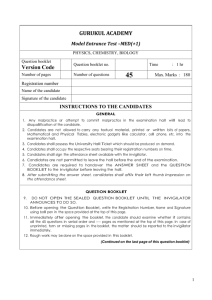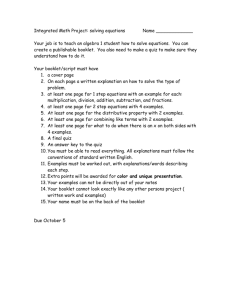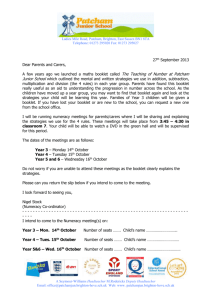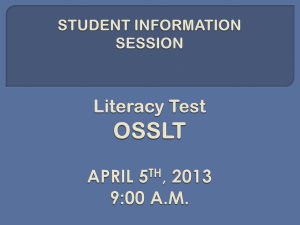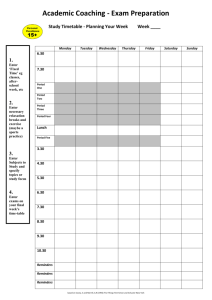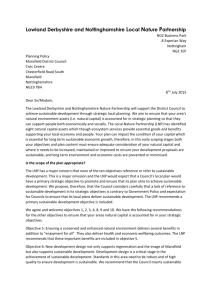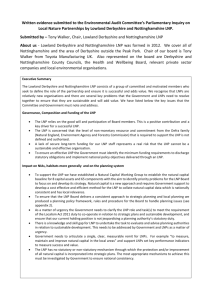Model Entrance Test –MED(+1)
advertisement
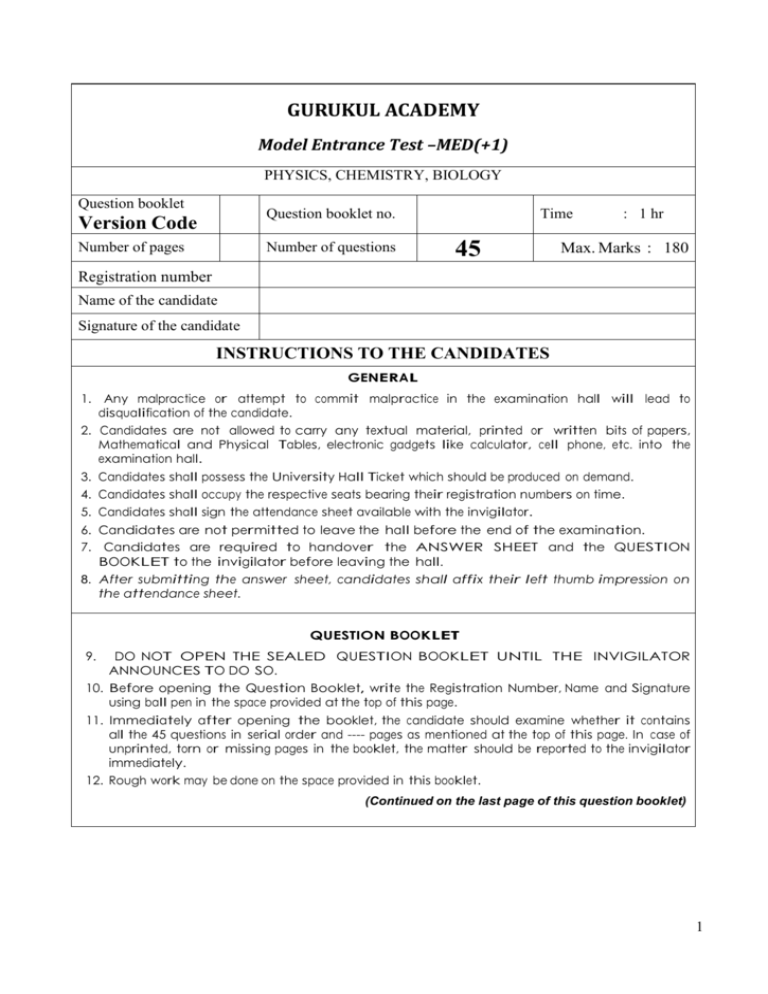
GURUKUL ACADEMY Model Entrance Test –MED(+1) PHYSICS, CHEMISTRY, BIOLOGY Question booklet Question booklet no. Version Code Number of pages Number of questions Time 45 : 1 hr Max. Marks : 180 Registration number Name of the candidate Signature of the candidate INSTRUCTIONS TO THE CANDIDATES GENERAL 1. Any malpractice or attempt to commit malpractice in the examination hall will lead to disqualification of the candidate. 2. Candidates are not allowed to carry any textual material, printed or written bits of papers, Mathematical and Physical Tables, electronic gadgets like calculator, cell phone, etc. into the examination hall. 3. Candidates shall possess the University Hall Ticket which should be produced on demand. 4. Candidates shall occupy the respective seats bearing their registration numbers on time. 5. Candidates shall sign the attendance sheet available with the invigilator. 6. Candidates are not permitted to leave the hall before the end of the examination. 7. Candidates are required to handover the ANSWER SHEET and the QUESTION BOOKLET to the invigilator before leaving the hall. 8. After submitting the answer sheet, candidates shall affix their left thumb impression on the attendance sheet. QUESTION BOOKLET 9. DO NOT OPEN THE SEALED QUESTION BOOKLET UNTIL THE INVIGILATOR ANNOUNCES TO DO SO. 10. Before opening the Question Booklet, write the Registration Number, Name and Signature using ball pen in the space provided at the top of this page. 11. Immediately after opening the booklet, the candidate should examine whether it contains all the 45 questions in serial order and ---- pages as mentioned at the top of this page. In case of unprinted, torn or missing pages in the booklet, the matter should be reported to the invigilator immediately. 12. Rough work may be done on the space provided in this booklet. (Continued on the last page of this question booklet) 1 1. A body starts from rest and acquires a velocity of 4ms–1 during a displacement of magnitude 4m. Its acceleration is a) 0.5ms–2 b) 1 ms –2 –2 c) 2 ms d) 4 ms –2 e) 6 ms –2 2. Two bodies are dropped from different heights h1 and h2. The ratio of the times taken by them to reach the ground will be a) h22 : h12 b) h1 : h2 c) h1 : h2 d) h2 : h1 3. A stone released with zero velocity from the top of a tower reaches the ground in 4s. The height of the tower is about a) 20 m b) 40 m c) 80 m d) 160 m e) 110 m 4. The projectile is thrown at an angle of 40o with the horizontal and its range is R1. Another projectile is thrown at an angle 40o with the vertical and its range is R2. What is the relation between R1 and R2? a) R1 = R2 b) R1 = 2R2 c) R2 = 2R1 d) R1 = 4R2/5 e) R2 = 3R1 5. A stone falls from rest. The total distance covered by it in the last second of its motion is equal to the distance covered in the first three seconds of its motion. How long does the stone remain in the air? Take g = 10 ms–2. a) 4 s b) 5 s c) 6 s d) 7 s e) 9 s 6. Two balls of same mass are projected one vertically upwards and the other at angle 60 o with the vertical. The ratio of their potential energy at the highest point is : a) 3 : 2 b) 2 : 1 c) 4 : 1 d) 4 : 3 e) 1 : 2 7. A book is lying on the table. What is the angle between the action of the book on the table and the reaction of the table on the book? a) 0° b) 45° c) 90° d) 180° 2 8. Three equal mass P, Q and R are pulled with a constant force F. They are connected to each other with strings. The ratio of the tension between PQ and Q R is : a) 1:1 b) 2:1 c) 1:2 d) 3:1 9. A body of mass 16 kg accelerates down an inclined plane with a force of 8 N. What is the minimum force required to make it move upwards with the same acceleration? a) 4 N b) 87 N c) 12 N d) 16 N 10. Two blocks of mass 4 kg and 6 kg are placed in contact with each other on a frictionless horizontal surface. See figure. If we apply a push of 5 N on the heavier mass, the force on the lighter mass will be: a) 5 N b) 4 N c) 2 N d) None of the above 11. The electronic configuration of the element which is just above the element with atomic number 43 in the same periodic group is a) 3d5 4s2 b) 3d6 4s1 c) 4s2 4p6 d) 4s2 4p5 e) 3d1 4s2 12. Which statement is correct? a) H2+ is more stable than H2 b) H2− is more stable than H2 c) H2+ is more stable than H2− d) H2+ and H2− are of equal stability 13. In which of the following is there the most highly electronegative carbon atom? a) butane b) but-1-ene c) but-2-ene d) but-1-yne e) methane 14. The pair having equal number of unpaired electrons in the d-sub level is a) Cu2+ and Mn2+ b) Mn2+and Ni2+ c) Ti2+ and Ni2+ d) V3+ and Sc2+ 15. Which of the following diatomic molecules will be stabilised by the removal of an electron? a) N2, C2, NO b) NO, O2, F2 c) CO, N2, F2 d) B2, N2, O2 3 16. Among KO2, AlO2− , BaO2, N O 2 , and NO paramagnetism is exhibited by a) AlO2− and BaO2 b) BaO2 and N O 2 c) N O 2 and NO d) KO2 and NO e) BaO2, KO2 and NO 17. The correct order of bond order is a) N2 > N2+ > N2− > N22− b) N22− > N22− > N2+ > N2 c) N2 > N2+ = N2− > N22− d) N22− > N2+ = N2− > N2 Bond orders . 18. Which of the following has identical B.O. as NO+? a) CN – b) O2− c) CN + + d) N2 e) F2 19. The central atom of which of the following has/have vacant 3d orbital? a) SO42− b) MnO4− 2− c) CrO4 d) ClO4− e) all 20. Anhydrous aluminium chloride exposed to moist air gives white fumes. The reason cannot be attributed to a) electron deficiency b) hydrolysis c) Lewis acid character d) formation of HCl e) none of these 21. If the orbital that an electron occupies has no node, the orbital could be a)1s b) 2p c)3d d) 4f e) 1s, 2p,3d,4f 22. The ionisation energy of the hydrogen atom in the ground state is given by a) hc c) hc/RH e) h/RHc b) hcRH d) RH/hc 23. If an electron beam is accelerated by a potential difference of 10 kV, What will be the velocity of the electron in m 𝑠 −1 ? a) 5.9 × 107 c) 3.6 × 106 e) 4.5 × 107 b) 2.8 × 108 d) 1.5 × 105 4 24. The frequency of limiting lines in the Lymann, Balmer and Paschen series hydrogen spectrum are respectively (Rydberg constant constant=109677 cm-1) a) 3.29× 1015 𝑠 −1 , 1.65 × 105 𝑠 −1 and 1.1 × 1015 𝑠 −1 b) 1.1 × 105 𝑠 −1 , 2.75 × 104 𝑠 −1 and 1.2 × 104 𝑠 −1 c) 3.29 × 1015 𝑠 −1 , 8.22 × 1014 𝑠 −1 and 3.66 × 1014 𝑠 −1 d) 3.29 × 1013 𝑠 −1 , 8.22 × 1012 𝑠 −1 and 3.66 × 1012 𝑠 −1 of the 25. Photoelectric work function of sodium is 2.3 eV. The longest wavelength that can eject electron from the sodium atom is: a) 540 nm b) 865 nm c) 270 nm d) 188.3 nm e) 810 nm 26. The pyrenoids are made up of a) Proteinaceous centre and starchy sheath b) Core of protein surrounded by fatty sheath c) Core starch surrounded by sheath of protein d) Core of nucleic acid surrounded by protein sheath 27. Which of the following group of algae produces carrageenan? a) Brown algae b) Red algae c) Green algae d) Blue – Green algae 28. Spirogyra has a : a) Haplontic life cycle b) Diplontic life cycle c) Haplobiontic life cycle d) Diplobiontic life cycle 29. Bryophytes are not characterised by a) Alternation of generation b) Presence of chlorophyll c) Presence of vascular tissues d) Well developed root system 30. Antheridium and archegonium(sex organs) are present in a) Spirogyra b) Mucor c) Funaria d) Bacteria 31. Example for tuberous adventitious root is a) Dahlia b) Carrot c) Radish 5 d) Beet 32. Sucker is a subaerial stem modification for vegetative propagation and is seen in a) Hydrocotyl b) Chrysanthemum c) Pistia d) Launea 33. An aerial modification of axillary bud meant for vegetative reproduction is a) Stolon b) Runner c) Bulb d) Bulbil 34. The androecium of mustard is called : a) Tetradynamous b) Didynamous c) Sygenesious d) Synandrous 35. Epipetalous stamens are found in : a) Cruciferae b) Solanaceae c) Liliaceae d) Mimosaceae 36. Classification given by Bentham and Hooker is a) Artificial b) Natural c) Phylogenetic d) Numerical 37. Basic unit or smallest taxon of taxonomy/classification is a) Species b) Kingdom c) Family d) Variety 38. Binominal nomenclature means a) One name given by two scientists b) One scientific name consisting of a generic and specific epithet c) Two names, one latinised, other of a person d) Two names of same plant 39. Biological organization starts with a) Cellular level b) Organismic level c) Atomic level 6 d) Submicroscopic molecular level 40. Which one of the following pairs of animals comprises ‘jawless fishes’ a) Mackerals and rohu b) Lampreys and hag fishes c) Guppies and hag fishes d) Lampreys and eels 41. If Hydra is broken into pieces a) Hydra will die b) Every fragment will grow into complete hydra c) Some fragment will form complete hydra d) Hydra will undergo sexual reproduction 42. Chloragogen cells in Pheretima are specialized for a) Nutrition b) Excretion c) Reproduction d) Respiration 43. The infective stage of Ascaris is a) Fertilized egg b) Embryonated egg c) Rhabditoid larva d) Adult Ascaris 44. The cephalopods are complex molluscs. Which of the following is not a characteristic of this group? a) Grasping tentacles b) Sophisticated vision c) Sessile lifestyle d) Propulsive water siphon 45. Compared with the sponges, which of the following does not represent a difference in body plan found in the cnidarians? a) Presence of a distinct body cavity b) Radial symmetry c) Possession of nematocysts d) Alternation of body forms 7
